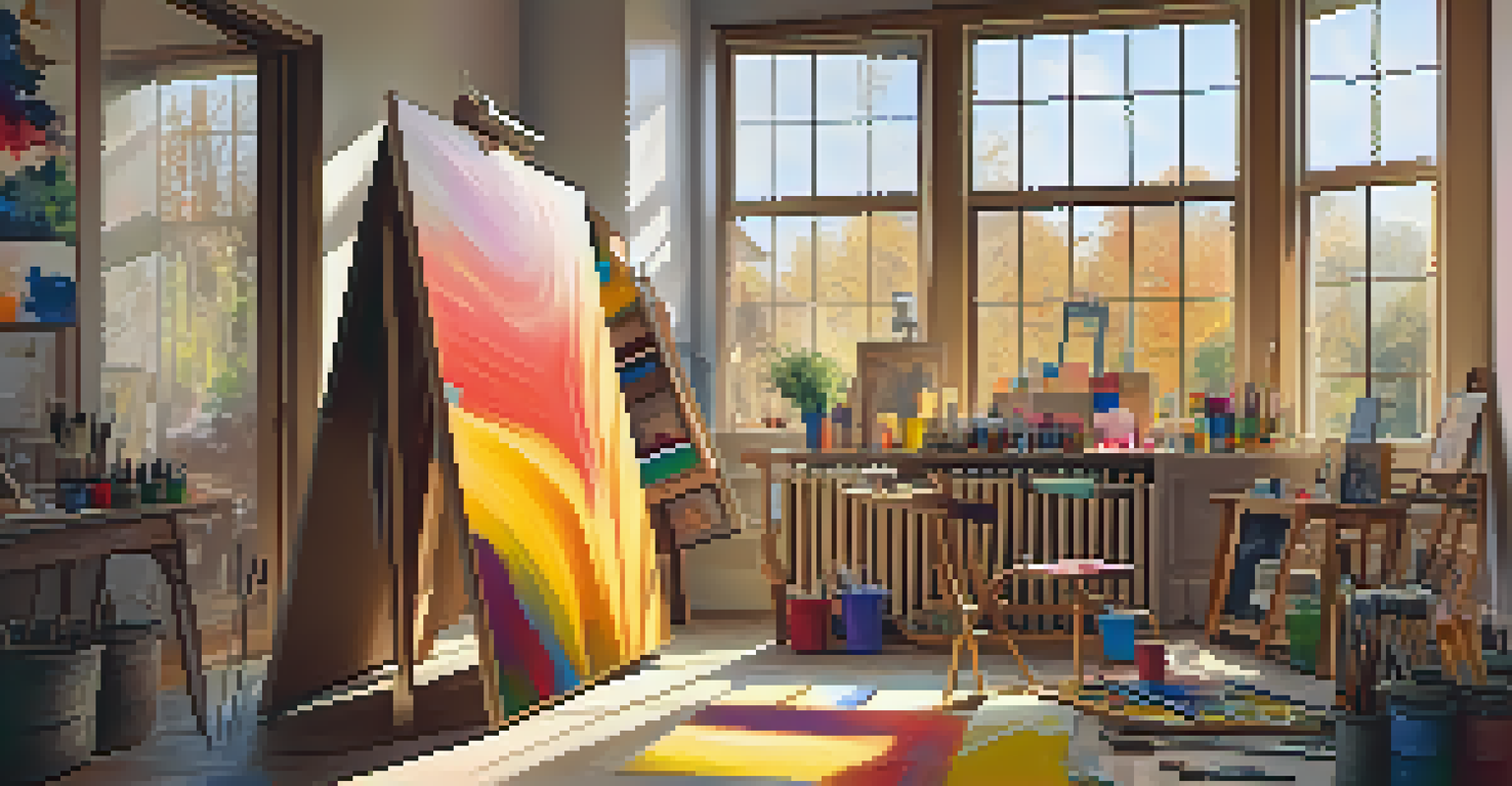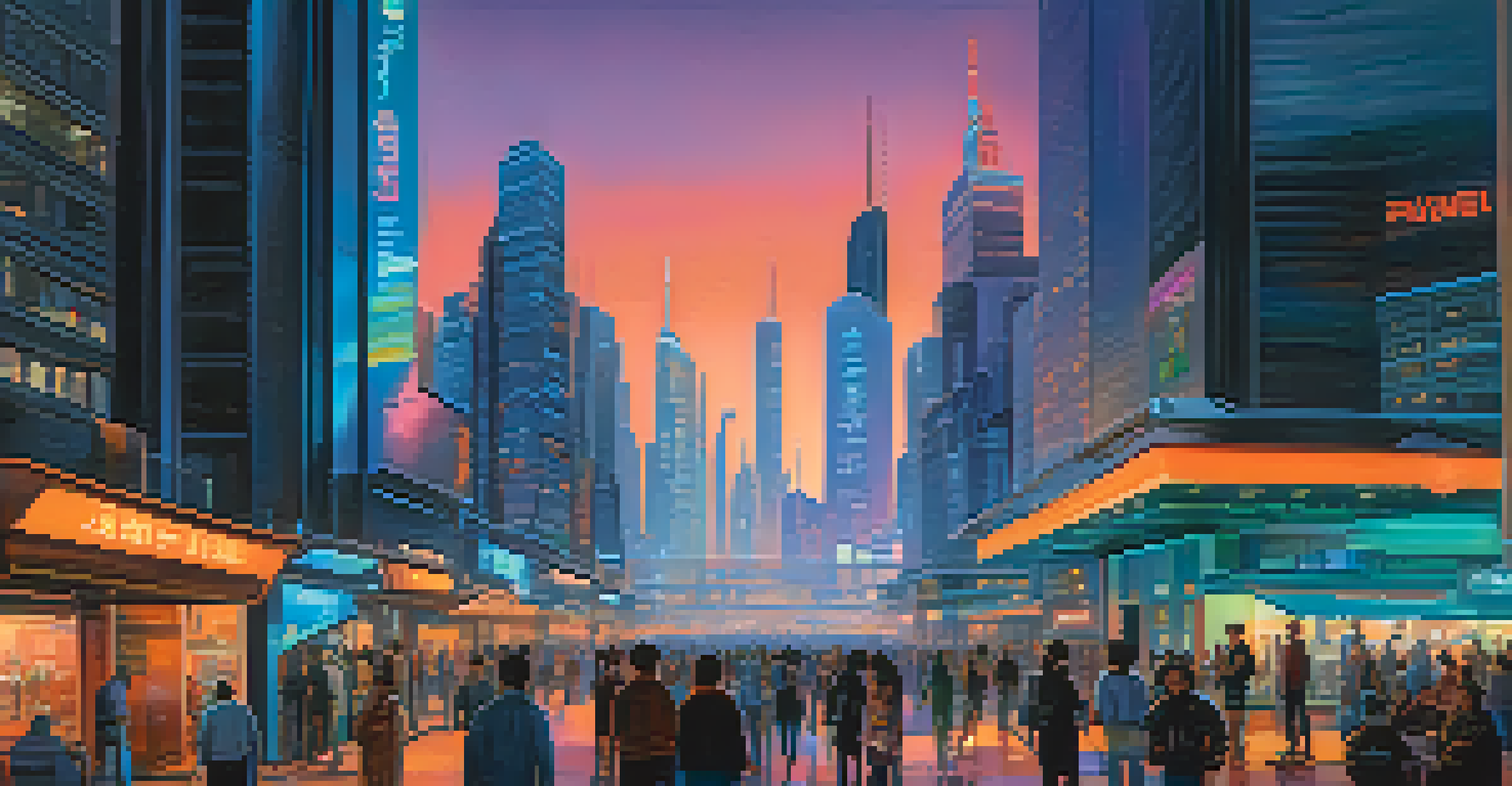AI in Art: How Algorithms Are Changing Painting Techniques

Understanding AI: A Quick Overview for Artists
Artificial Intelligence, or AI, refers to computer systems that can perform tasks typically requiring human intelligence. In the art world, this means using algorithms to analyze and generate images, pushing the boundaries of creativity. Artists today are beginning to embrace these tools, seeing them not just as machines, but as collaborative partners in their creative process.
Art is not a thing; it is a way.
For instance, AI can learn from thousands of paintings across different styles, enabling it to produce unique pieces that combine various techniques. This capability allows artists to expand their creative horizons, experimenting with new styles and methods they might not have considered before. As AI continues to evolve, it’s reshaping our understanding of what art can be.
Moreover, integrating AI into art doesn’t mean losing the human touch. Instead, it can enhance the artist's work, offering new perspectives and insights. By understanding AI's potential, artists can harness this technology to elevate their craft.
Algorithms and Their Role in Creative Expression
Algorithms are the backbone of AI, acting as a set of rules that guide how data is processed. In the context of art, algorithms can analyze color palettes, composition styles, and even brushstroke patterns. This analytical power allows AI to generate new artworks or suggest modifications to existing pieces, opening up exciting avenues for exploration.

For example, artists can use AI algorithms to create generative art, where the computer produces unique pieces based on specific parameters set by the artist. This fusion of human intention and machine output leads to surprising results, often sparking new ideas and directions for the artist. It’s like having a creative assistant that never runs out of energy or inspiration.
AI as a Creative Partner
Artists are increasingly viewing AI not just as a tool, but as a collaborative partner that enhances their creative process.
Additionally, this technology helps artists refine their techniques by providing instant feedback on their work. By analyzing the structure and style of a painting, AI can suggest improvements, allowing artists to learn and evolve their skills in real-time.
AI Tools: Revolutionizing the Artistic Process
Today, a variety of AI tools are available for artists, each offering unique features that enhance the creative process. Programs like DeepArt and Runway ML leverage machine learning to transform photos into stunning artworks, mimicking the styles of renowned painters. These tools allow artists to experiment with different visual styles without needing extensive technical skills.
The only way to do great work is to love what you do.
Moreover, platforms such as Artbreeder enable users to blend images and create entirely new artworks through collaborative AI. This not only democratizes art creation but also encourages artists to experiment with AI-driven processes. It's a playful, engaging way to generate new ideas and challenges traditional notions of authorship.
As these tools become more accessible, many artists are discovering the joy of integrating AI into their workflows. The collaborative nature of these tools encourages creativity and exploration, ultimately leading to a richer artistic landscape.
AI's Impact on Traditional Painting Techniques
While AI is often associated with digital art, its influence on traditional painting techniques is also significant. Artists are increasingly incorporating AI-generated elements into their physical artworks, blending the digital and analog worlds. This fusion can create stunning pieces that challenge the viewer's perception of art.
For example, an artist might use AI to generate a digital design and then translate that design onto canvas using traditional painting techniques. This method not only enhances the creative process but also introduces new textures and layers into the artwork. The combination of AI and traditional methods leads to a fresh interpretation of classic techniques.
Ethical Considerations in AI Art
The rise of AI in art brings important ethical questions about authorship and the potential for biases in AI-generated works.
As artists experiment with these integrations, they are redefining the boundaries of traditional painting. AI encourages them to break free from conventional constraints and discover new ways to express their creativity.
The Role of AI in Art Education
AI is also making waves in art education, providing new resources and tools for aspiring artists. Online platforms utilizing AI can offer personalized learning experiences, helping students identify their strengths and areas for improvement. This tailored approach can be especially beneficial for those who may struggle in traditional educational settings.
Moreover, AI tools can assist in teaching fundamental concepts of art, such as color theory and composition. By analyzing a student's work, AI can provide instant feedback, allowing for more efficient learning and growth. This interactive learning environment fosters creativity and encourages students to take risks in their artistic endeavors.
As art education evolves, AI is becoming an essential component, guiding the next generation of artists. By embracing these technologies, educators can inspire students to explore new techniques and develop their unique artistic voices.
Ethical Considerations: AI in the Art World
As with any emerging technology, the use of AI in art raises important ethical questions. One major concern is the issue of authorship: when an AI generates a piece of art, who is the true creator? Is it the artist who programmed the algorithm, or the algorithm itself? These questions challenge our traditional concepts of creativity and ownership.
Additionally, there’s the potential for AI to perpetuate biases present in the data it was trained on. If an AI learns from a limited set of artworks, it may produce works that reflect those biases, potentially sidelining diverse artistic voices. It’s crucial for both artists and developers to be aware of these issues and strive for inclusivity in AI-generated art.
AI's Impact on Art Education
AI is transforming art education by providing personalized learning experiences and instant feedback for aspiring artists.
Navigating these ethical dilemmas requires ongoing dialogue within the art community. By addressing these concerns, artists can work towards a future where AI complements human creativity rather than complicating it.
Looking Ahead: The Future of AI in Art
The future of AI in art is both exciting and unpredictable. As AI technology continues to evolve, we can expect even more innovative tools and techniques that will further transform the artistic landscape. Artists who embrace these developments will likely find new ways to express themselves and connect with their audiences.
Moreover, as collaborations between artists and AI become more mainstream, we may witness a shift in how art is perceived and valued. This integration could lead to a broader acceptance of AI-generated works in galleries and exhibitions, challenging our definitions of art and creativity.

Ultimately, the relationship between AI and art is a dynamic one, filled with potential. As artists, technologists, and audiences explore this uncharted territory together, we can look forward to a future where creativity knows no bounds.